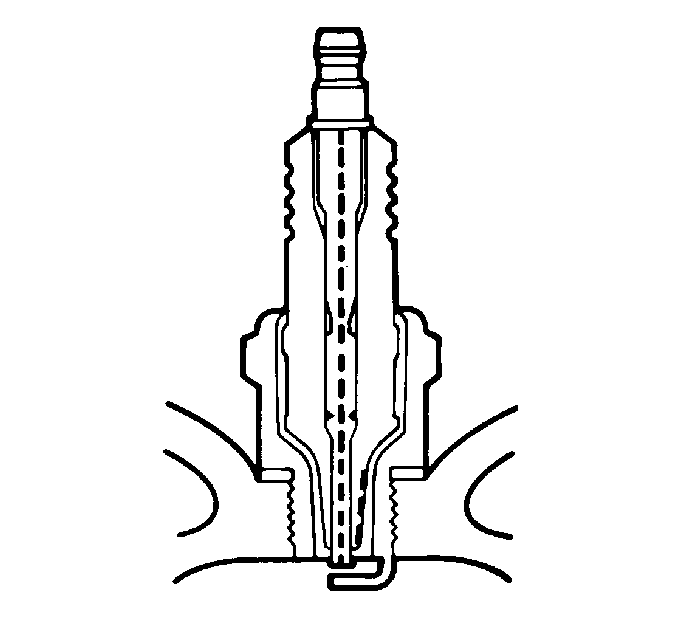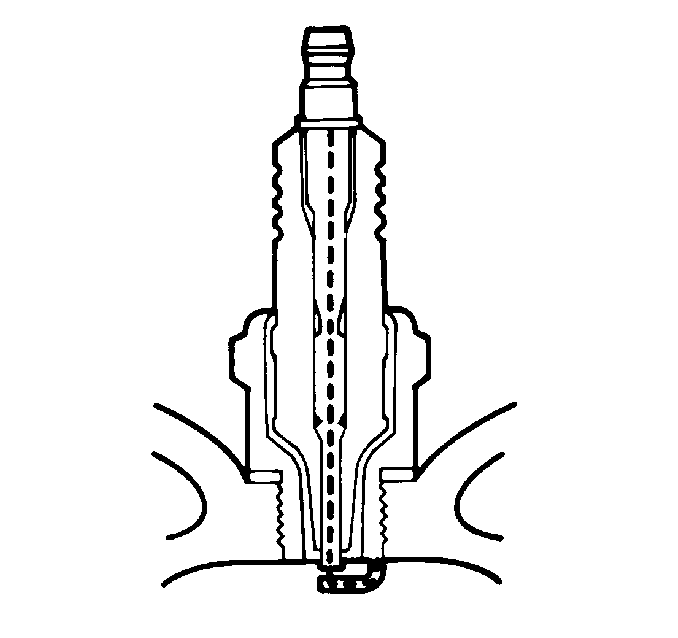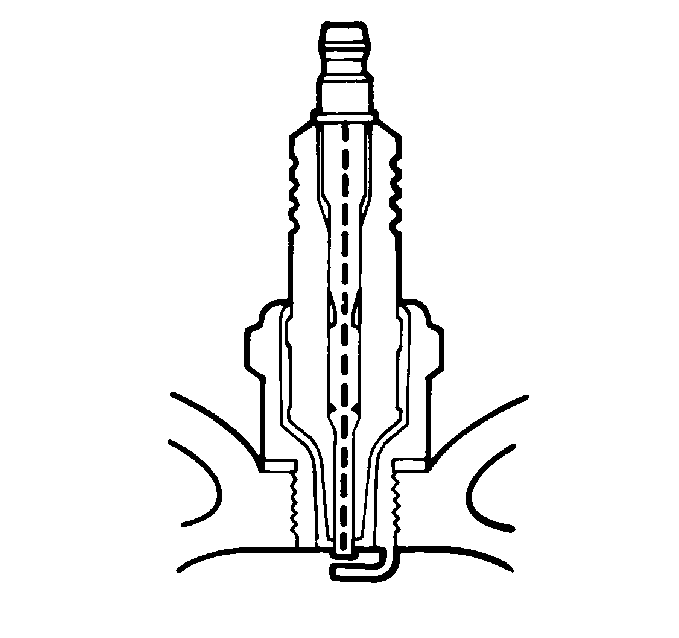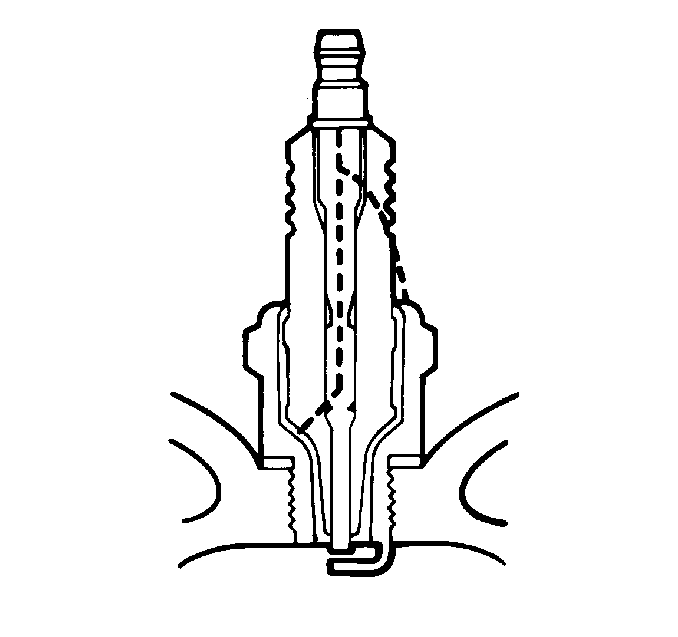Follow the Scheduled Maintenance Services recommendations given in the Maintenance Schedule in General Information to assure satisfactory spark plug performance. Normal spark plug operation will result in brown to grayish-tan deposits appearing on the portion of the spark plug that projects into the cylinder area. A small amount of red-brown, yellow, and white powdery material may also be present on the insulator tip around the center electrode. These deposits are normal combustion by-products of fuels and lubricating oils with additives. Some electrode wear will also occur.
Engines which are not running properly are often referred to as misfiring. For information on misfiring, refer to Cuts Out, Misses in Engine Controls 4.6L.

Flashover occurs when a damaged spark plug boot, along with dirt and moisture, permits the high voltage charge to short over the insulator to the spark plug shell or the engine. Should misfiring occur before the recommended replacement interval, locate and correct the cause.
Carbon fouling of the spark plug is indicated by dry, black carbon (soot) deposits on the portion of the spark plug in the cylinder. Excessive idling or slow speeds under light engine loads can keep the spark plug temperatures so low that these deposits are not burned off. Rich fuel mixtures or poor ignition system output may also be the cause; refer to Rouigh, Unstable or Incorrect Idle, Stalling in Engine Controls.

Oil fouling of the spark plug is indicated by wet oily deposits on the portion of the spark plug in the cylinder, usually with little electrode wear. This may be caused by oil getting past worn piston rings or valve seals. This condition also may occur during break-in of new or newly overhauled engines.

Deposit fouling of the spark plug occurs when the normal red-brown, yellow or white deposits of combustion by-products become sufficient to cause misfiring. In some cases, these deposits may melt and form a shiny glaze on the insulator around the center electrode. If the fouling is found in only one or two cylinders, valve stem clearances or intake valve seals may be allowing excess lubricating oil to enter the cylinder, particularly if the deposits are heavier on the side of the spark plug that was facing the intake valve.

Excessive gap means that the airspace between the center and side electrodes at the bottom of the spark plug is too wide for consistent spark plug firing. This may be due to improper gap adjustment or to excessive wear of the electrodes during use. Check of the gap size and compare the gap measurement to that specified for the vehicle. Refer to Spark Plug Usage. Excessive gap wear can be an indication of continuous operation at high speeds or with high engine loads, causing the spark plug to run too hot. Too small of a gap indicates the plug was damaged at the time of installation. Another possible cause is an excessively lean fuel mixture.
Low or high spark plug installation torque or improper seating of the spark plug can result in the spark plug running too hot and cause excessive gap wear. The spark plug and cylinder head seats must be in good contact for proper heat transfer and spark plug cooling. Dirty or damaged threads in the head or on the spark plug can keep the spark plug from seating even though the proper torque is applied. Once the spark plugs are properly seated, tighten the spark plug to the proper torque. Refer to Spark Plug Usage. Low torque may result in poor contact of seats due to a loose spark plug. Overtightening may cause the spark plug shell to be stretched and also result in poor contact between seats. In extreme cases, exhaust blow-by and damage beyond simple gap wear may occur.

Cracked or broken insulators may be the result of improper installation, damage during spark plug regapping, or heat shock to the insulator material. Upper insulators can be broken when a poorly fitting tool is used during installation or removal, or when the spark plug is hit from the outside. Cracks in the upper insulator may be inside the shell and not visible. Also, the breakage may not cause problems until oil or moisture penetrates the crack later.
A broken or cracked lower insulator tip (around the center electrode) can result from damage during regapping or from heat shock (spark plug suddenly operating too hot).
Damage during regapping can happen if the gapping tool is pushed against the center electrode or the insulator around it, causing the insulator to crack. When regapping a spark plug, make the adjustment by only bending the side electrode. Do not contact other parts.
Heat shock breakage in the lower insulator tip generally occurs during severe engine operating conditions (high-speeds or heavy-loading) and may be caused by over advanced timing or low grade fuels. Heat shock refers to a rapid increase in the tip temperature that causes the insulator material to crack.
Spark plugs with less than the recommended amount of service can sometimes be cleaned and regapped, then returned to service. However, if there is any doubt about the serviceability of a spark plug, replace it. Replace spark plugs with cracked or broken insulators. In some cases, such as flashover, the ignition wire may need to be changed.
